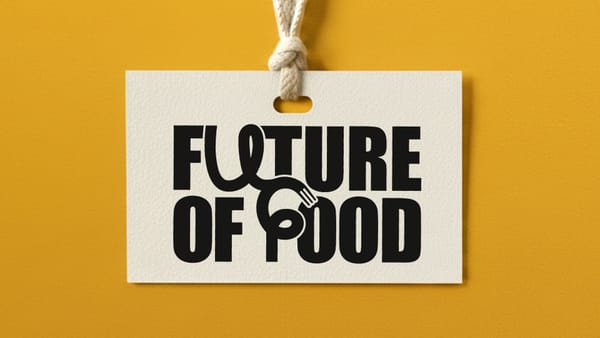UNSTUCK 009: Vaping Took Off By Reframing Its Category, Here's How Sustainable Food Can Emulate Its Success
How to drive major category change by “selling better” not “selling instead”.

In our first guest author piece, Michelle Roberts explains how vaping pioneers grasped the importance of "selling better", not just "selling instead", to completely flip a centuries old industry. Sustainable food needs a similar reframing if we want to see change within our lifetimes.
Which technology has changed human behaviour in the blink of any eye?
Here's a clue: it isn’t mobile phones or the internet, which were both decades in the making.
As squeamish as some of us might find it, when it comes to driving genuine and large-scale behaviour change, you’d be hard-pressed to find a better example* than the Vaping industry.
The speed and scale of change from smoking to vaping has been astronomical (by 2020, after little more than a decade in the mainstream, e-cigarettes were more than twice the size of tobacco). Compare this explosion to the excruciatingly slow-burn (even stagnation) for other ‘alt sectors’ such as plant-based or healthier snacking (or healthier anything for that matter). Yes, these sectors persist and yes, have enjoyed periods of flourishing fortunes, but they stubbornly remain mere fractions of the sectors they are supposedly replacing.
Perhaps it’s time for all of us interested in behaviour change to sit up and take note of vaping.
What it boils down to is an exemplary understanding of genuine consumer behaviour (rather than claimed) and the emotion at the heart of our decision-making, which often flies in the face of reason. You can tell me what I need to do ... but I’ll choose to do what I want.
What vaping has perfectly grasped – and executed – is the power of reframing instead to better, such that rational compromise becomes emotional gratification, and changing behaviour consequently, a “no brainer”.
(Of course, there’s the obvious cry of “but look at the money that’s been ploughed in”. Very true, though, in common with many of the “alt sectors”, the birth of modern vaping - as opposed to the early non-starters - came about on a much smaller scale, driven by a passionate innovator and the entry of various start-ups and only later, the tobacco giants themselves.)
Nevertheless, there are some crucial principles at the heart of the vaping success story* (where success = commercial gain) that could well be applied to other sectors.
1. Define a new reality
The products themselves are technically called e-cigarettes – but who calls them that any more?
Far from ape-ing traditional tobacco, the language, products, even the shopping experience could not be more different to the sector they “replace”.
This an industry that has self-defined, rejecting comparisons to what came before, instead presenting a new and unique reality all of its own. No free-froms, alt-anything here.
Consumer take-out = Vaping feels different to smoking
2. Define the future
When it comes to innovation, this is a sector that has truly looked around for inspiration, and found it in the shape of industries far better known for technology and aesthetics. It’s no coincidence that Juul’s product is likened to a USB stick or that many of the colours and flavours (cotton candy anyone?) would be more at home in a beauty aisle.
These have not only put greater distance between vaping and traditional tobacco, but have created a perpetual sense of excitement and modernity, tapping into people’s emotional need for the latest, greatest, newest experiences.
Consumer take-out = Vaping is a positively appealing experience
3. Define the audience
Consequently, the sector is able to stretch to as wide an audience as possible. The original Hon Lik invention might well have been designed as an authentic smoking alternative (indeed fuelled by a very personal connection to smoking), but the brands that have followed since have changed the game. The use of design and innovation, coupled with youth-centric marketing (think heavy use of social media, sponsorship of music events and the like) have succeeded in creating pull from an enormous audience, many of whom probably never smoked in the first place. An audience scale that truly matters, because talking only to a niche (in this case, smokers who want to quit) is ultimately self-limiting. Whereas, find a way to talk to the masses and the niche will come along anyway.
Consumer take-out = Vaping is for me
All in all, Vaping has successfully* carved out its own place in the world separate from its “parent sector” of tobacco, created a cutting-edge, emotionally-desirable experience and engaged audiences far further afield than where it all began. Commercially put; job well done.
Increasingly, plenty of other ‘alt brands’ are demonstrating a similar deeper level of consumer understanding. Tony’s Chocolonely is a master in this regard; slave labour might be at its heart, but exciting flavours, unique chunky texture, story-led branding and funky design provide personal, emotional gratification for many of its customers that has little to do with the ethical message beneath.
Exactly as Vaping has done so well; don’t sell instead, sell better.
* Disclaimer: As an avid non-smoker, non-vaper, mum to kids now stumbling across vaping in school loos, I do not intend to present a pro-vaping position, but can still recognise marketing excellence at work.
Guest Author
Michelle Roberts
Michelle is a brand strategy expert, focused on CPG. After a lengthy career in global blue-chips, she now works for clients to sharpen positionings, identify opportunities and craft growth strategies. She has developed Food as her particular specialty (partly by accident and partly by design!) and is passionate about applying her Marketing expertise in this space to help brands that are doing good, do better.




